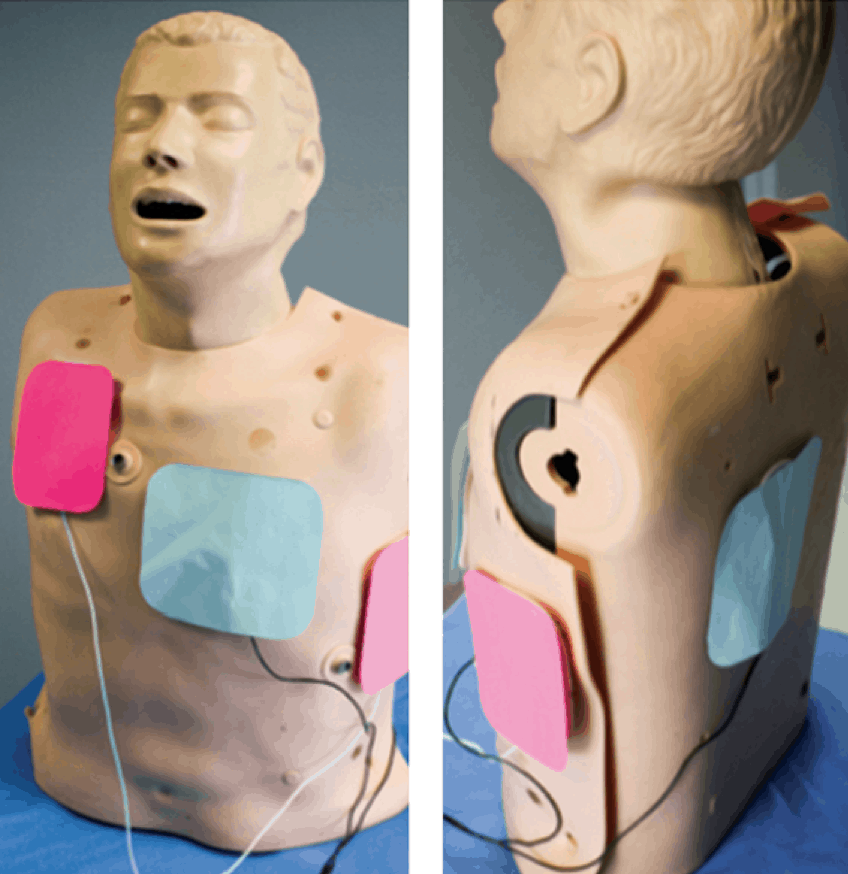Double Sequential External Defibrillation(DSED) is a means of administering sequential shocks to terminate shock resistant ventricular fibrillation. It is a controversial topic, with no robust studies.
Resistant ventricular arrhythmias are different to electrical storm(1). Electrical storm is a state characterised by recurrent occurrences of unstable ventricular arrhythmias, over a short period of time. This is usually a catecholamine driven response, thus removing catecholamines and even treating with a beta blocker may assist(2). Watch the video below for a discussion of cases.
Electrical storm is different to refractory ventricular arrhythmias, which by definition do not terminate. It is these, that double sequential defibrillation is recommended for.
The occurrence of resistant ventricular fibrillation is rare, as most cases terminate with a few standard shocks(3). Certainly before going to a procedure like this, that is not really backed in the literature, we need to ensure that we maximise what we are doing with standard defibrillation, which includes:
- Correct pad position
- Good pad contact
- Minimisation of resistance
The controversies related to this procedure
- We are not sure if it actually works as most of the literature related to it is poor
- This process delivers high energy defibrillation, which in itself has been shown to promote ventricular arrhythmias(4)
- Delivering dual shocks manually, may be equivalent to delivering two separate shocks, given the delay related to human reaction time(5)
- Delivering biphasic waveforms may have the effect of greatly enhancing the energy delivered, or even cancelling it.
Recent Studies
Study 1(6) Delorenzo et al performed a meta analysis of the topic. They looked at out of hospital refractory ventricular fibrillation.
- There were no randomised trials
- Pooled total patients were 499
- Differing defibrillation protocols
- No correction for confounding
- The result was that DSED had no effect on either of:
- Survival to hospital discharge
- Event survival
- Return of spontaneous circulation(ROSC)
A retrospective study of DSED was recently published by Cheskes et al(7). Here is the breakdown:
- Retrospective review of 252 patients.
- The question asked was if DSED was better than standard defibrillation in terminating ventricular fibrillation
- They found that VF termination and ROSC were the same for the two groups. However:
- Early DSED had a higher success rate for arrhythmia termination and ROSC
- A single DSED shock was effective
The Bottom Line
The evidence for DSED isn’t great. The studies are small and retrospective. Its use is controversial due to aspects related to the amount of energy delivered and the potential for harm.
However…..this is a situation where the patient will not survive, if we don’t do something. If we delay this, even the retrospective studies show, worst outcome. It may be something worth doing.
Have you used it?
Watch the video below given at the Cardiac Bootcamp on ‘The Resistant Arrhythmia’.
Peter Kas
References
- Kowey P R. An overview of antiarrhythmic drug management of electrical storm. Can J Cardiol. 1996 Apr;12 Suppl B ():3B–8B. [PubMed] [Google Scholar]
- Driver BE et al. Use of esmolol after failure of standard cardiopulmonary resuscitation to treat patients with refractory ventricular fibrillation. Resuscitation. 2014 Oct;85(10):1337-41
- Holmen J et al. Survival in ventricular fibrillation with emphasis on the number of defibrillations in relation to other factors at resuscitation. Resuscitation. 2017;113:33-38.
- Kerber RE et al. Energy, current and success in defibrillation and cardioversion. Circulation. 1988;77(5):1038-1046.
- Johnson EE, Alfernes CA, Wolf PD, et al. Effect of pulse separation between two sequential biphasic shocks given over different lead configurations on ventricular defibrillation efficacy. Circulation. 1992;85(6):2267-2274.
- Delorenzo A et al. Double sequential external defibrillation for refractory ventricular fibrillation out-of-hospital cardiac arrest: A systematic review and meta-analysis. Resuscitation. 2019 Feb;135:124-129.
- Cheskes S et al. The impact of double sequential external defibrillation on termination of refractory ventricular fibrillation during out-of-hospital cardiac arrest. Resuscitation. 2019 Jun;139:275-281.










